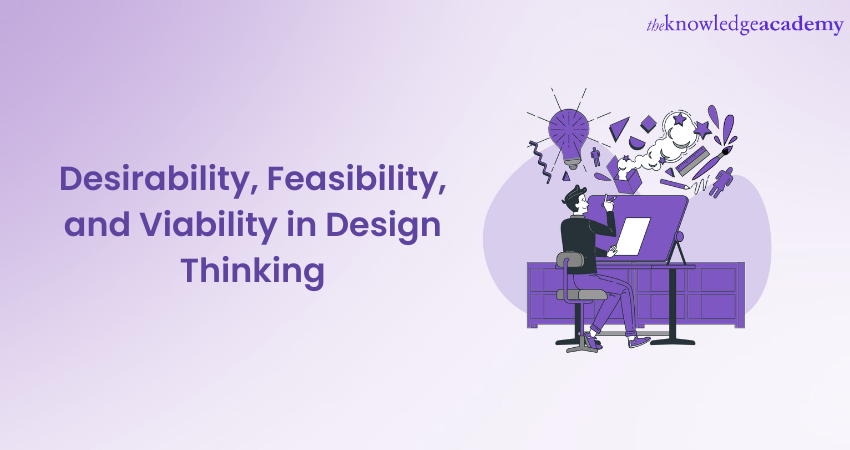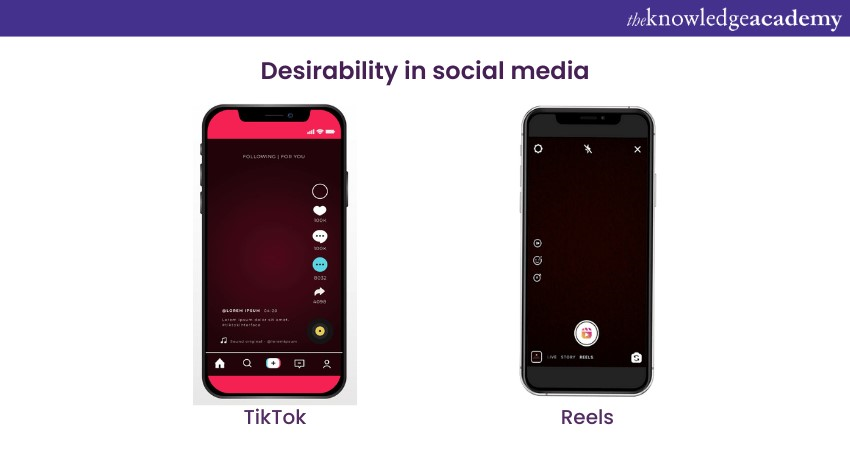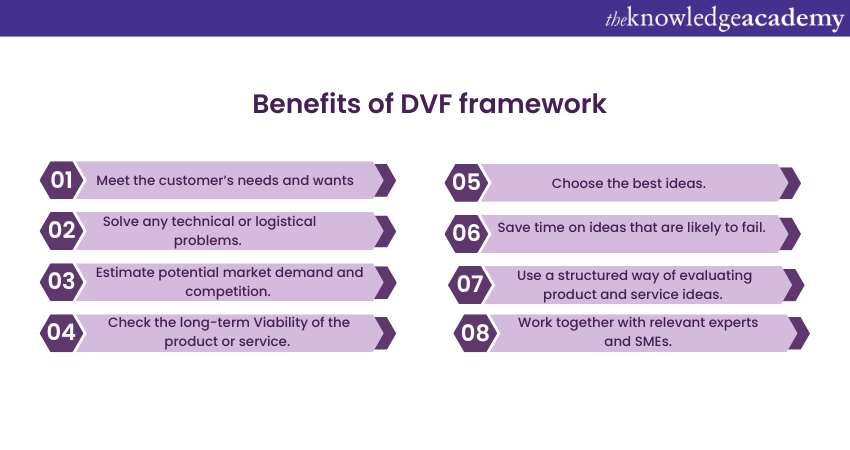We may not have the course you’re looking for. If you enquire or give us a call on 01344203999 and speak to our training experts, we may still be able to help with your training requirements.
Training Outcomes Within Your Budget!
We ensure quality, budget-alignment, and timely delivery by our expert instructors.

In the tech industry, Desirability, Feasibility, and Viability in Design Thinking play a crucial role. These concepts are like the guiding stars for creating things people want and need. Desirability is all about making products or solutions that are accessible and valuable to folks.
Feasibility means ensuring that whatever you're dreaming up can be built or done. Lastly, Viability is like the practical side of things, ensuring that your idea can make sense economically and work well in the real world. When we think about design with these three elements in mind, we're on the right track to creating awesome and useful products. Its where Desirability, Feasibility, and Viability in Design Thinking all come together.
In this blog, we will explore what Desirability, Feasibility, and Viability in Design Thinking are alongside their benefits . By the end of this blog, you will learn how to create products or services that people want, can be built, and will be profitable.
Table of Contents
1) What is Desirability in Design Thinking?
2) Viability in Design Thinking
3) Feasibility in Design Thinking
4) Benefits of DVF Framework
5) Conclusion
What is Desirability in Design Thinking?
Customers or users need or want a product that satisfies the Desirability criteria. The intent behind Desirability in creating a product is ensuring the product solves a problem for someone engagingly and pleasingly. The logic is simple here: if a product does not aim to solve a problem, naturally, it will not reach out to many customers. Most companies overlook the Desirability factor by focusing more on other factors; as a result, people overlook the company's latest product.
Designers play a crucial role in overcoming this hurdle in the product development phase; Designers such as User Experience (UX) Designers are specialists in identifying whether a product is desirable. Utilizing methods such as performing User Experience research early in the product development stage increases the Desirability factor by enhancing factors based on the research. UX Designers also help identify more crucial problems that can be solved by refocusing the product.

Let us understand the Desirability factor with the help of an example. Many of you will be familiar with Instagram, a popular photo-sharing platform. Recently, Instagram introduced Reels, a feature that allows users to share videos of short length, highlighting this video-sharing feature over its existing photo-sharing feature. The company launched this feature to compete with another video-sharing platform known as TikTok.
The intent behind introducing this feature was clear: to take away TikTok's user base and increase its own user base by providing users with the same features. On the face of it, this decision was economically beneficial for the company since Instagram had the resources to build this feature quickly, making it efficient in executing such a large-scale decision in a short span of time.
However, upon the launch of this feature, it became clear that this decision was not desirable. Instagram's existing user base was upset with this decision since they wanted the platform only to share photos. Considering Desirability, Instagram was trying to solve a problem that did not exist in the first place, and the intent behind executing this decision was purely from a business expansion perspective.

Viability in Design Thinking
A product is viable when it makes smart business sense. If a product can generate or save money for the company upon its launch, it can be considered viable. This criteria stays relevant for both short-term and long-term achievements. To determine if a product is viable, companies can decide using certain factors such as:
a) identifying the target audience willing to pay for the product.
b) Understanding the means through which they can pay for the product.
c) Calculating the short-term and long-term profitability margin.
To put it simply, if the product is something a customer wants but is too expensive for the customer, then the product is not viable. From a business standpoint, profits generated from a product must be sustainable; a company cannot invest in developing a product that creates first-time buyers and not long-term ones.
To understand Viability from a product development perspective, let us look at an example to understand the concept better. There could be a textile business model that aims to make clothing only for Christmas. People celebrate Christmas in various ways, and the company aims to cover those areas to provide prospective consumers with the maximum number of options. The business model on paper makes sense in terms of understanding the market and target audience and setting up the required infrastructure to implement the business model.
Upon its launch, nearing Christmas, the products are well received in the market, and the company is generating projected profits, making it look like everything is going as planned. However, the company soon realised that this business model needed to be fixed. First, other products in the market undercut their price model, giving the company a dent in their projected profit margins; and second, after the holidays, there was a sudden decline in their profits.
Let us understand this business model from a viability perspective and gain clarity on what went wrong. The business model aims to cater to a seasonal market, hardly having a lifecycle of a month. A profitable business model cannot be sustained on such short seasonal markets; a product must provide sustainable profits to a company. This concludes that a product needs to be viable in the long term to support the business model.
To avoid this outcome, a company must analyse all the aspects of the business thoroughly before taking measures to implement the business model. A company must also not depend on a single market to generate profits; targeting a few, if not many, markets by providing relevant products makes sure to give the company consistent profits, resulting in a sustainable business model.
Gain skills essential to successfully leading any team; sign up for our Leadership Training now!
Feasibility in Design Thinking
Feasibility in the product development process aims to understand what makes the best sense in developing a product or in implementing an innovative idea. For a product to be feasible, the company must be confident that the technology required to build the product can be developed, considering factors such as time frame, cost incurred in developing, and product relevance at the time of product launch.
Feasibility focuses on more than whether the technology required to build the product can be developed. It also takes into account factors such as whether the new technology can benefit other products and the presence of appropriate means for disturbing the product. The feasibility aspect of product development processes tries to understand whether the innovation strengthens the business.
Let us understand Feasibility with the help of an example. A motor company that sells electric cars has been in the market for some time. The outgoing model they sell is doing well in the market, and they wish to expand their market by introducing a new feature that will give them an edge over their competitors. The current model has a charging time of one hour, and the company wishes to introduce technology that will reduce the charging time to half an hour.
Introducing this technology will benefit the company significantly as it improves upon a critical feature from a consumer's perspective. Since this feature does not exist in the market, it is more likely to attract prospective customers by giving them an edge over other companies upon its introduction.
As part of a business expansion plan, this seems logical. However, the technology required to introduce this feature does not exist. To decide if it makes sense to proceed with developing this technology, the company must consider certain parameters, such as:
a) Is it possible to develop the technology in the first place?
b) If it is, then how long will the development process take?
c) What will be the development cost incurred?
d) Will the significance of the technology be relevant at the time of launch?
e) How will the distribution network be established to reach the consumers?
The company needs to analyse these parameters to decide if developing the technology will be favourable for the company's growth in the long term.
Benefits of DVF framework
The DVF framework stands for Desirability, Viability, and Feasibility. It is a useful tool for designing products or services that satisfy customer needs and achieve success.
This framework helps teams focus on the best ideas, create a minimum viable product (MVP) that meets user expectations, and ensure the product or service is technically possible. Here is the list of benefits of DVF framework:

1) It helps ensure that a product idea matches the customer’s needs and wants. To measure the Desirability of an idea, do user research to see how well the idea fits with the user’s goals, needs and problems.
2) It helps to find and solve any technical or logistical problems that could stop the product from being developed or successful. By working with technical experts during the process, you can discover and fix any complex technical problems that could prevent successful development. Your technical experts can also help you develop other solutions that work within the technical limits.
3) It helps to estimate the potential market demand and competition for the product. By looking at Desirability and using evidence to support your decisions, you’ll also get a good idea of how much demand there is for your solution and how it compares to other products.
4) It helps to check the long-term Viability and scalability of the product by looking at the costs of development, maintenance and possible profit from the idea. You can decide if it is worth investing in.
5) It helps to choose and focus on the best product ideas. It can be hard to deal with the many possible ideas from a brainstorming session or Design Thinking workshop. The DVF framework helps you to evaluate and pick the ideas that are worth following.
6) It helps to save time and resources on product ideas that are not feasible or viable. The DVF framework acts as a filter that removes any ideas likely to fail for known reasons. It also protects us from our excitement and passion for ideas. Sometimes, we might like an idea, but in reality, it might be better to avoid it. The DVF framework helps us make this choice.
7) It supports a structured and systematic way of developing products or services. With so many people, factors, and ideas involved, a structured, systematic way of evaluating ideas will keep everything moving smoothly in the right direction.
8) It promotes collaboration and cross-functional thinking among team members. Collaboration is essential for Design Thinking and problem-solving. The DVF framework promotes collaboration with a large group of experts and stakeholders to ensure any assumptions are checked and based on expert advice.
Learn about cutting-edge technologies that can enable better decision-making; sign up for our Decision Making Skills Training now!
Conclusion
Desirability, Feasibility, and Viability in Design Thinking are the three criteria that help you design products or services that meet user needs, technical possibilities, and business goals. By using the DVF framework, you can evaluate and prioritise your ideas, create an MVP that meets user expectations, and ensure the long-term success of your product or service. Design Thinking with DVF is a powerful way to create innovative and useful solutions.
Learn the role of an instructional Designer in an organisation; sign up for our Instructional Design Training now!
Frequently Asked Questions
Upcoming Business Skills Resources Batches & Dates
Date
 Successful People Management and Team Leadership
Successful People Management and Team Leadership
Fri 7th Jun 2024
Fri 2nd Aug 2024
Fri 4th Oct 2024
Fri 6th Dec 2024







 Top Rated Course
Top Rated Course


 If you wish to make any changes to your course, please
If you wish to make any changes to your course, please


